Zen Bonsai Gardens. Traditionally, Zen or Oriental gardens have always had an association with spirits and religion. In the eleventh century, Buddhist monks created the first Zen gardens. They created these gardens by combining traditional Oriental elements of water, minerals and plants. These gardens became a medium of meditation as they were interpreted by Zen philosophy.

In the modern day, Zen gardens are commonly known to be dry landscapes consisting of natural elements of rock, sand, gravel, wood, very few plants and no water. Zen gardens now are extremely popular, especially within workspaces, to help reduce stress and anxiety and create a calmer environment. The repetitive actions of rearranging the rocks and raking sand in a zen garden can help to clear the mind and focus.
Traditional Zen Gardens
Inspired by Shinto tradition and amplified by Korean and Chinese culture, the garden attained its specifically Japanese character through the implementation of zen Philosophy. The Tenryu-ji garden in Kyoto marked the transition from the shinden style to the Zen style. The refined style that monk Muso Kokushi used to convert the ancient imperial residence to the Zen monastery to, continued to be used throughout the shohin period. From the seventeenth century there was a return to a less strict, more playful and picturesque style. Naturally distancing from the rigour of the previous period. The Zen style continued to be used in the temples.
In Shinto and Buddhist tradition, trees have the power to captivate beneficial heavenly flows. Planting trees in gardens not only attracts the gods but also protects the house and its occupants from negative forces.
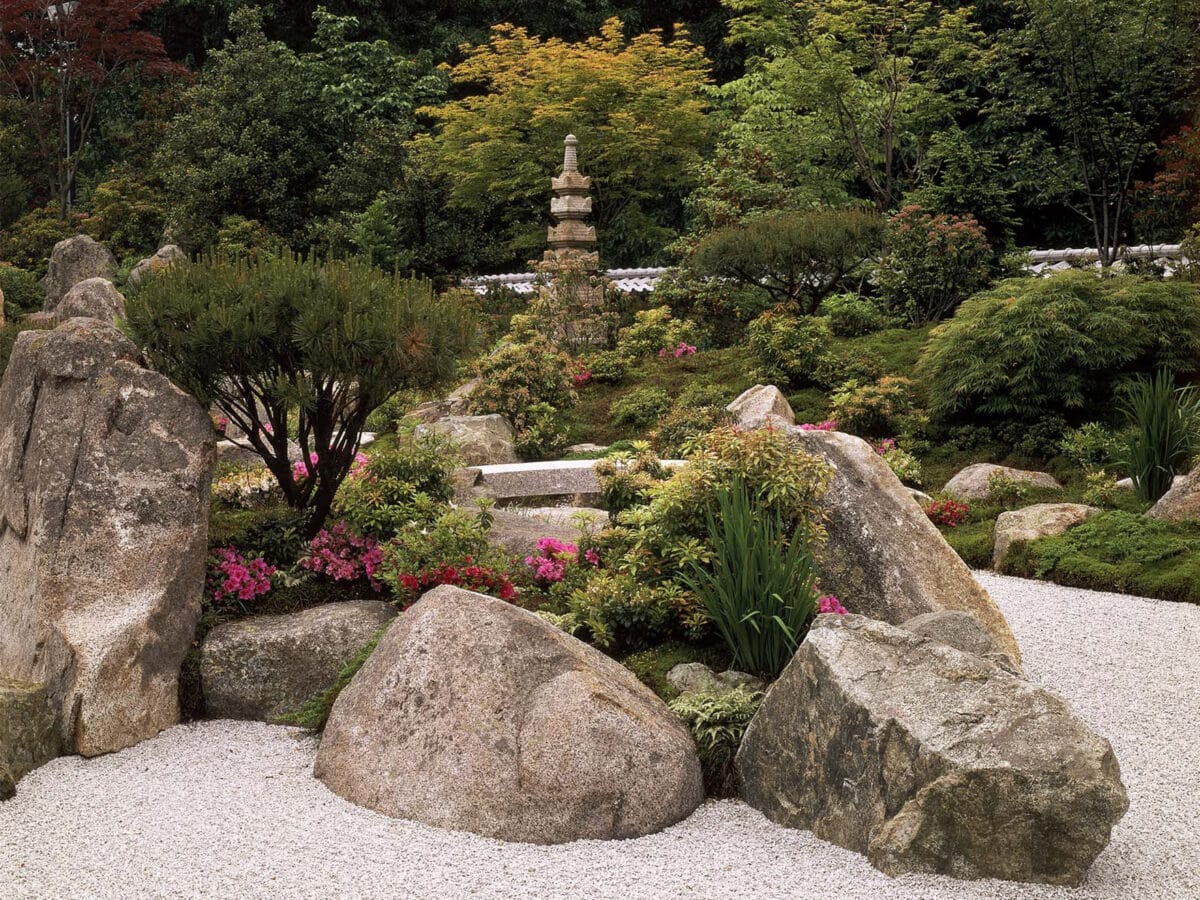
Stone
“You should position the stones while observing the features of the garden and the orientation of the pool. Express the fusui, which may evoke a natural landscape, and keep the original shape of the stones in order to do this”. A quote from The Sakuteiki. In order to avoid the risk of negative elements affecting the harmony of the garden, only perfect stones were selected. This also suited the authenticity and simplicity aesthetic of the Japanese. The stones are the backbone of a tradition Zen garden.
Water
Water is the source of purity and life, it is always present somehow in Japanese garden. A gravel or sand surface in a dry garden usually portrays a river or pond. In the Botanical Garden, Kyoto, the surface of the water creates a mirror effect and provides indirect light, which magnifies and lights up the pattern and colour of the maple branches. Waterfalls became a major feature of the garden as the Zen monks celebrated it in all of its forms, particularly in the karesansui (dry gardens).

Nature
“According to Buddhist doctrine, one day a millionaire wanted to dedicate a marvellous temple to Buddha, but was unable to find the right trees to build it. In those days, a priest of princely origin thought that dedicating a temple decorated with treasures to Buddha was one thing, but dedicating trees was quite another, also worthy of Buddha. So he dedicated trees and made a garden.” – A quote from The Sakuteiki. Plants dominate everyday life in Japan, as a point of reference for aesthetic values. The Japanese remain firmly attached to the use of plants as raw materials for creating buildings.
Traditionally, everything in the garden must be as if it were drawn. It must have the same clarity as a drawing, and it should be as close as possible in its detail to an idyllic view of nature.
Zen Bonsai Gardens
We have taken the idea of a dry Zen garden and paired it with a bonsai. Bonsai are commonly kept in offices or on coffee tables, they are known to reduce stress and anxiety levels. Consequently, this paired with the Zen garden creates the ultimate living stress relief tool. Whether you are experiencing a difficult day at work, or want to wind down with one on your bedside table.
-
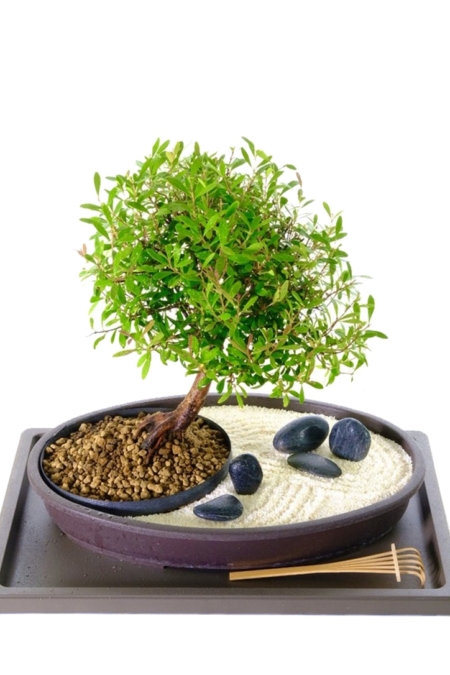 Zen Bonsai Garden – HARMONY£75.00
Zen Bonsai Garden – HARMONY£75.00 -
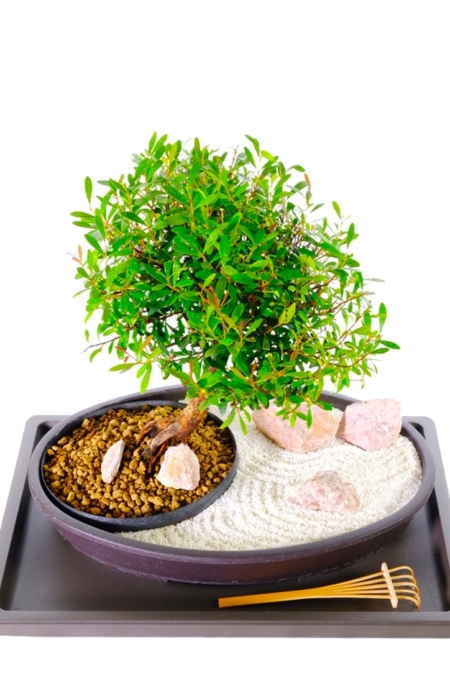 Zen Bonsai Garden – TRANQUILLITY£75.00
Zen Bonsai Garden – TRANQUILLITY£75.00 -
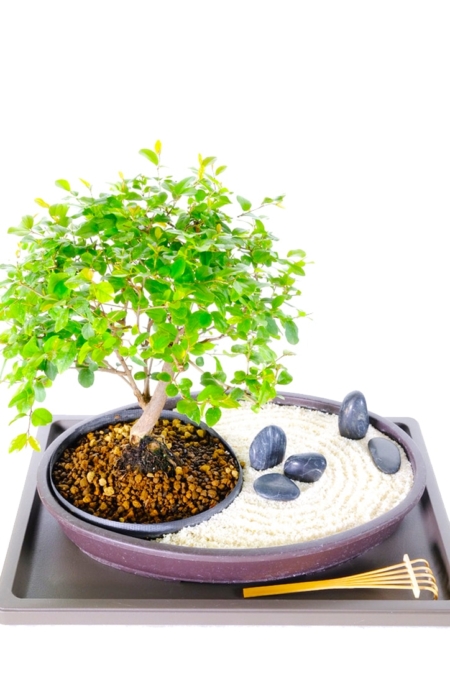 Zen Bonsai Garden – SERENITY£75.00
Zen Bonsai Garden – SERENITY£75.00 -
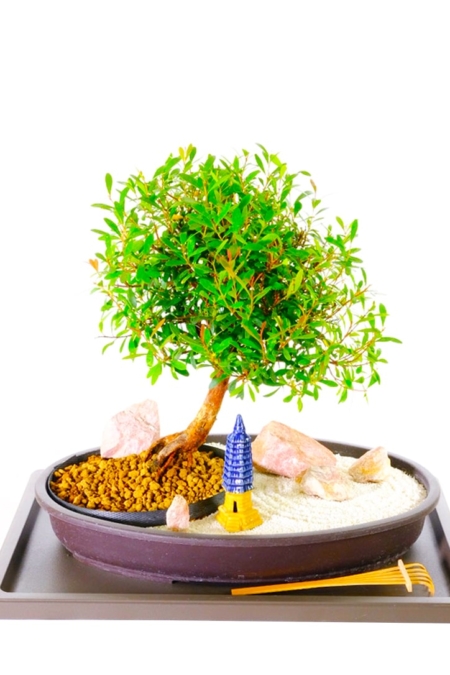 Zen Bonsai Garden – INSPIRATION£85.00
Zen Bonsai Garden – INSPIRATION£85.00 -
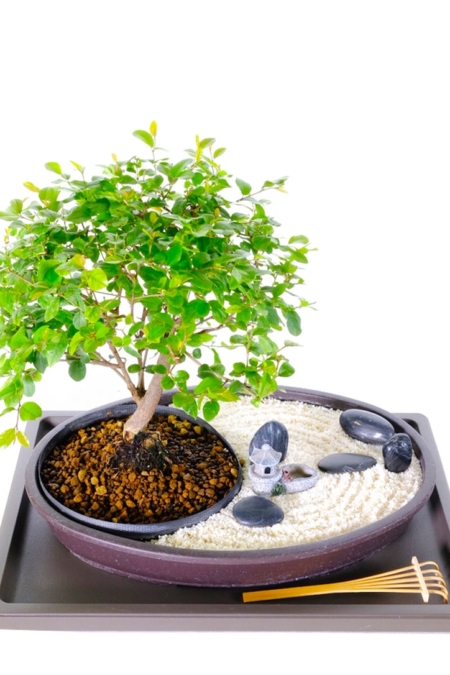 Zen Bonsai Garden – REFLECTION£85.00
Zen Bonsai Garden – REFLECTION£85.00 -
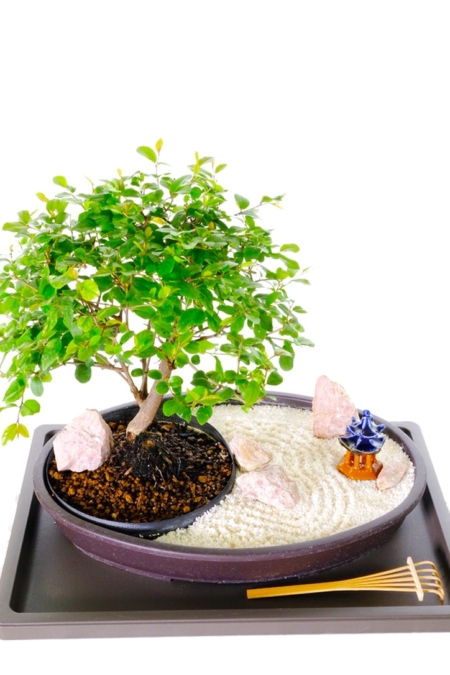 Mini Zen Garden | Zen Bonsai Garden – CONTEMPLATION£85.00
Mini Zen Garden | Zen Bonsai Garden – CONTEMPLATION£85.00 -
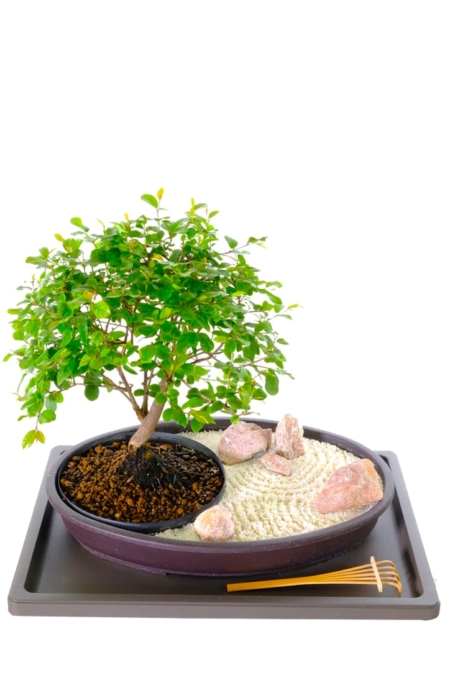 Zen Sand Garden | Zen Bonsai Garden – PEACE£75.00
Zen Sand Garden | Zen Bonsai Garden – PEACE£75.00 -
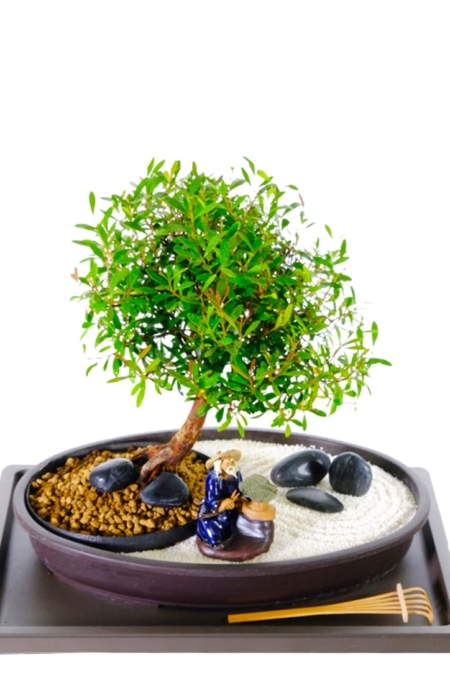 Zen Bonsai Garden – RELAXATION£85.00
Zen Bonsai Garden – RELAXATION£85.00


